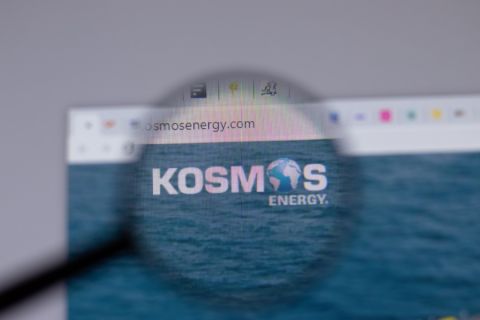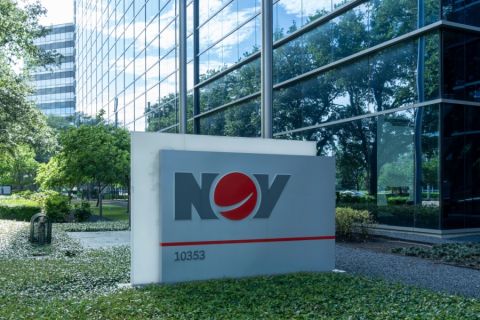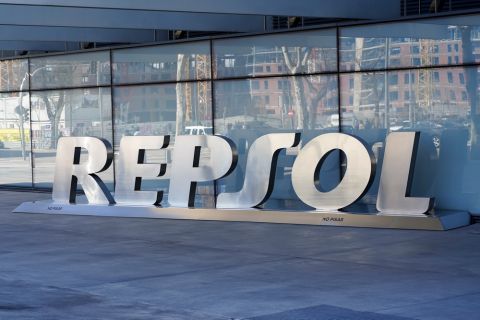
California’s climate disclosure law was passed by the California Legislature on Sept. 12 and could be a prelude to the SEC’s emissions reporting requirements. (Source: Shutterstock)
Regulatory frameworks to reduce emissions associated with climate change have been around for decades, but 2023’s “hot topic” in climate change law involves what companies may be required to disclose regarding emissions and how companies address climate change as both a risk and opportunity.
This issue came into full relief last year with newly proposed complex and extensive Securities Exchange Commission (SEC) requirements for publicly traded companies to disclose not only direct emissions, but also—for certain companies— indirect emissions, and to disclose at least material climate change impacts on business operations and financial prospects.
Not to be left behind, California’s legislature is tackling disclosures too. New legislation, Senate Bill 253, known as the Climate Corporate Data Accountability Act, would soon require large entities doing business in California to report greenhouse-gas (GHG) emissions associated with their products, from production to consumption of goods and services.
On Sept. 12, the legislation was passed by the California Legislature and now heads to Gov. Gavin Newsom’s desk for signature.
In SB 253’s words, “California investors, consumers and other stakeholders deserve transparency from companies regarding their greenhouse gas emissions…to inform their decision making.” This goal aligns with the SEC’s nationwide regulatory goal. Underlying both actions is the theory that a better understanding of the impact of production and consumption will reduce GHG emissions by allowing for more informed choices by citizens.
Who must comply? All companies doing business in California with revenue of more than $1 billion for a given fiscal year would be “reporting entities,” estimated to be up to 5,300 companies. The legislation would reach far more than California-based companies, extending its impact to many mid- and large-sized companies by virtue of sales or a business presence in California.
What would companies need to do and by when? Subject companies would be required to disclose annually to the public their “Scope 1” and “Scope 2” emissions. The first disclosure could be as early as 2026, unless a later date is set by the California Air Resources Board (CARB). Only a year later, “Scope 3” emissions would also be reported.
In general, Scope 1 emissions are direct emissions from a company’s own processes, like from a manufacturing plant’s operations (e.g., combustion of fossil fuel to run a boiler). Scope 2 emissions are those generated by utility suppliers to the company, e.g., from “consumed electricity, steam, heating, or cooling purchased or acquired.” Scope 3 emissions are also indirect, and include upstream and downstream emissions generated by suppliers, transportation sources (supply delivery, business travel, employee commuting), and users of a product (e.g., for an oil and gas company, emissions from a consumer’s car).
Many companies already track Scope 1 and 2 emissions. The Scope 3 requirement will impose new tracking and reporting obligations, including activities beyond a company’s control and oftentimes emissions from suppliers and customers globally.
How quickly would SB 253 be implemented? The law’s implementation timeline is aggressive, with CARB having only a year to adopt implementing regulations. Much must be accomplished in this short timeframe: CARB must contract with an “emissions reporting organization” to develop a reporting program to receive and make publicly available all reported emissions. Beyond its normal rulemaking process, which involves extensive public process as compared to federal regulations (which require one 30-day comment period), CARB must consult with parties such as government stakeholders, investors, consumer and environmental justice organizations and reporting entities that have “demonstrated leadership in full scope greenhouse gas emissions accounting, public disclosure and greenhouse gas emissions reduction.”
CARB’s regulations must accomplish goals that may be in tension with one another. For example, regulations must ensure emissions are reported in an “easily understandable” fashion, while simultaneously avoiding duplication of effort, taking into account various corporate reorganizations and including all corporate names (for example, fictitious names, trade names, logos).
While nominally seeking to streamline and avoid duplication, Scope 1 and 2 emissions disclosures must be independently verified by a third-party auditor on a phased schedule reflecting “limited assurance” and “reasonable assurance” levels by 2026 and 2030, respectively. In general terms, reasonable assurance is the highest level of assurance and involves an affirmative finding by an auditor that the information is materially accurate, while limited assurance involves finding that the audit did not reveal evidence that the information was not materially accurate. Reasonable assurance levels typically require a greater depth of testing and a higher level of evidence, and thus are more costly to obtain. While Scope 1 and 2 emissions are relatively straightforward (at least in concept), Scope 3 emissions have been widely acknowledged as more challenging to estimate, with a large number of assumptions involved. SB 253 would authorize CARB, after evaluation in 2026, to require auditing of Scope 3 emissions at a limited assurance level by 2030.
Does SB 253 create any new implementing organizations? SB 253 is unique in requiring CARB to contract by July 1, 2027, with a nonprofit “emissions reporting organization” tasked with creating a reporting program and digital platform to publicly disclose emissions reported and publishing emissions disclosure reports. SB 253 also anticipates CARB creating a program for qualifying third-party auditors for GHG emissions, which finds precedent in California’s Low Carbon Fuels Standard program.
While some organizations that SB 253 anticipates would be created already exist, the bill would expand many of them and expects the creation of new ones. The notion of government delegating its authority to non-governmental entities is an issue likely to be controversial. To be sure, the board has relied on outside entities in the past, but having a separate entity undertake regulatory functions may raise concerns in the regulated community. In climate reporting, and ESG more generally, this approach is also seen in the EU.
Does SB 253 impose any new emission reduction obligations? Like other “right-to-know” statutes, SB 253 is a reporting and disclosure statute that would not require emission reductions, with the notion that reporting performance will drive companies to reduce emissions.
How does SB 253 compare to the proposed SEC federal reporting regulations? One concern stakeholders raise is that multiple programs are simultaneously under development, including in the EU, by the federal government, and in other jurisdictions. In 2024, the SEC intends to finalize its requirements for disclosing emissions and business and financial risks from climate change. Even if (as suggested by many public comments) the SEC limits its rule to Scope 1 and 2 emissions, issues of alignment between federal and California reporting requirements will arise. While the SEC proposal is nominally limited to public companies, SB 253 would apply to private and publicly traded companies, which may constitute the lion’s share of businesses impacted by the California legislation.
What to watch for this fall: First and foremost, a flurry of regulatory action will ensue, given the short timeframe for the CARB to issue regulations and enter contracts with organizations that will set up the reporting programs. Those with a monetary interest in the programs (the non-profits that would contract with CARB), will begin their own advocacy efforts to ensure they are well-positioned to win the contracts.
Reporting entities should pay careful attention to the numerous interpretations and requirements that will be proposed. While, nominally, California’s rulemaking process requires only a single 30-day public comment period, in practice, CARB begins with a series of workshops, often held throughout the state, in which it presents preliminary questions and seeks input on key issues from stakeholders. The workshops may be focused on specific issues or specific stakeholders. After the workshop process concludes, CARB will issue and seek comment on proposed regulatory text and will provide an “initial statement of reasons,” or ISOR, which describes and may seek comment on key issues in the regulation. The rulemaking also requires an Economic and Fiscal Impact Statement estimating the private and governmental monetary impacts.
Companies and their trade associations will want to participate in the workshops and formal rulemaking processes to ensure their input is considered, as well as to preserve options to challenge any final regulatory program in court, if that is warranted. Regardless of participation in the rulemaking, companies will want to review the workshop materials and proposed regulations to prepare for implementation of the requirements. While rule language can change during the process, proposed language is typically a good indication of the requirements that will actually be adopted. Given the short compliance deadlines set by the bill, companies that get ahead of the curve by developing their internal tracking process based on the proposal will typically be in a better position to achieve compliance and be ready for the 2026-2027 roll-out of the reporting program.


Shannon S. Broome is the managing partner of Hunton Andrews Kurth LLP’s San Francisco office and leads the firm’s California environmental practice, and Elisabeth Gunther is a senior attorney in the same office. They can be reached at sbroome@HuntonAK.com and egunther@HuntonAK.com.
Recommended Reading
Kosmos Energy’s RBL Increased, Maturity Date Extended
2024-04-29 - Kosmos Energy’s reserve-based lending facility’s size has been increased by about 8% to $1.35 billion from $1.25 billion, with current commitments of approximately $1.2 billion.
Barnett & Beyond: Marathon, Oxy, Peers Testing Deeper Permian Zones
2024-04-29 - Marathon Oil, Occidental, Continental Resources and others are reaching under the Permian’s popular benches for new drilling locations. Analysts think there are areas of the basin where the Permian’s deeper zones can compete for capital.
NOV Announces $1B Repurchase Program, Ups Dividend
2024-04-26 - NOV expects to increase its quarterly cash dividend on its common stock by 50% to $0.075 per share from $0.05 per share.
Repsol to Drop Marcellus Rig in June
2024-04-26 - Spain’s Repsol plans to drop its Marcellus Shale rig in June and reduce capex in the play due to the current U.S. gas price environment, CEO Josu Jon Imaz told analysts during a quarterly webcast.
Chevron Hunts Upside for Oil Recovery, D&C Savings with Permian Pilots
2024-02-06 - New techniques and technologies being piloted by Chevron in the Permian Basin are improving drilling and completed cycle times. Executives at the California-based major hope to eventually improve overall resource recovery from its shale portfolio.





